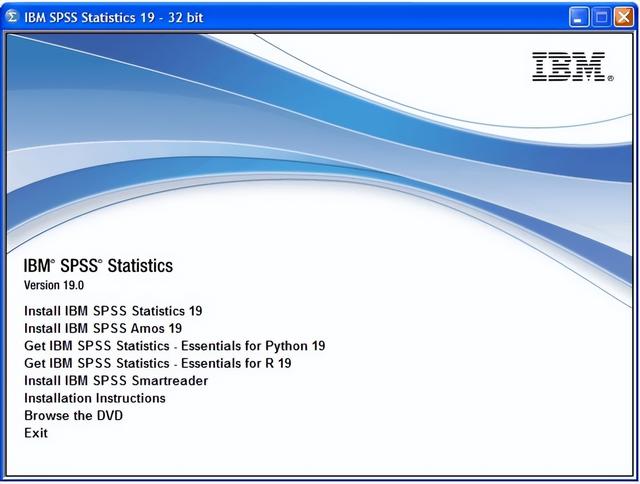统计学如何检验方差齐性:懿说学区21
统计学如何检验方差齐性:懿说学区21单因素方差分析采用的统计分析方法是F统计量,如果控制变量的不同水平对观测变量有显著影响,那么观测变量的组间离差平方和就越大,F值也就越大;反之,如果控制变量的不同水平没有对观测变量造成显著影响,那么组内离差平方和的影响也会相应较小,F值也会小。First let's learn about one-way ANOVA. Single factor analysis of variance is mainly used to study whether the different levels of a control variable cause significant differences and changes in the observed variables.上一期,我们了解了什么是方差分析,为什么要有方差分析,以及进行方差分析的一些基本步骤,从本期开始,我们就来具体地
Yishuo School District (21) | SPSS Statistical Analysis (31) Single factor ANOVA

“分享兴趣,传播快乐,增长见闻,留下美好! 大家好,这里是小编。欢迎大家继续访问学苑内容,我们将竭诚为您带来更多更好的内容分享。
"Share interest spread happiness increase knowledge and leave a good impression! Hello everyone this is Xiaobian. Welcome to continue to visit the content of Xueyuan and we will wholeheartedly bring you more and better content to share.
上一期,我们了解了什么是方差分析,为什么要有方差分析,以及进行方差分析的一些基本步骤,从本期开始,我们就来具体地学习方差分析的一些具体内容和实践。
In the previous issue we learned what analysis of variance is why it is needed and some basic steps for analysis of variance. From this issue we will specifically learn some specific contents and practices of analysis of variance.
首先,我们来学习单因素的方差分析。单因素方差分析主要是用来研究一个控制变量的不同水平是否对观测变量造成了显著差异和变动。
First let's learn about one-way ANOVA. Single factor analysis of variance is mainly used to study whether the different levels of a control variable cause significant differences and changes in the observed variables.
单因素方差分析采用的统计分析方法是F统计量,如果控制变量的不同水平对观测变量有显著影响,那么观测变量的组间离差平方和就越大,F值也就越大;反之,如果控制变量的不同水平没有对观测变量造成显著影响,那么组内离差平方和的影响也会相应较小,F值也会小。
The statistical analysis method used in one-way ANOVA is F statistic. If the different levels of control variables have a significant impact on the observed variables the greater the sum of squares of the inter group deviations of the observed variables the greater the F value; On the contrary if the different levels of control variables do not have a significant impact on the observed variables then the influence of the sum of squares of intra group deviations will be relatively small and the F value will also be small.

接下来我们来看一个具体的案例:
Next let's look at a specific case:

用四种饲料喂猪,共19头,分为四组,每一组用一种饲料,一段时间后称重,猪的体重增加数据如下表所示,比较四种饲料对猪的体重增加的作用有无不同。
A total of 19 pigs were fed with four kinds of feeds which were divided into four groups. Each group was fed with one feed and weighed after a period of time. The weight gain data of pigs were shown in the following table. Compare whether the effects of four kinds of feeds on the weight gain of pigs were different.
★
第一步,分析,由于考虑的是一个控制变量(饲料)对一个观测变量(体重)的影响,还是四种饲料,所以不能采用独立样本T检验,因为其只适用于两组数据。那么我们采取单因素方差分析的办法。
The first step is the analysis. Since the influence of one control variable (feed) on one observation variable (weight) or four kinds of feeds are considered the independent sample T test cannot be used because it is only applicable to two groups of data. Then we adopt the method of one-way ANOVA.
★
第二步,组织数据,我们将数据分成两列,一列是猪的体重,变量名为“weight”,另一变量是饲料品种(变量值分别为1,2,3,4),变量名为“fodder”,并将标签设置成对应的中文名称,输入数据并保存。
The second step is to organize the data. We divide the data into two columns one is the pig weight the variable name is "weight" and the other is the feed variety (variable values are 1 2 3 4 respectively) the variable name is "fodder". Set the label to the corresponding Chinese name enter the data and save it.


★
第三步,进行方差相等的齐性检验,方差分析的前提是各个水平下的总体服从方差相等的正态分布,且各组方差具有齐性。所以我们首先需要对方差相等的前提进行检验。我们点击选择菜单“分析->比较平均值->单因素ANOVA检验”,按照下图所示进行设置。然后运行后查看运行结果。
The third step is to test the homogeneity of equal variances. The premise of ANOVA is that the population at all levels follows a normal distribution with equal variances and the variances of each group are homogeneous. So we first need to test the premise that the difference between the two sides is equal. We click the menu "Analysis ->Comparison Average ->Single Factor ANOVA Test" to set as shown in the following figure. Then view the running results after running.



★
第四步,运行结果与分析,我们从结果中可以看到,方差齐性检验的原假设是:方差具有齐性。但是运行结果中的显著性概率P=0.000<0.05,所以应该拒绝原假设,说明四种饲料对养猪的效果有显著性差异。
The fourth step is to run the results and analysis. We can see from the results that the original hypothesis of the homogeneity test of variance is that the variance has homogeneity. However the significance probability in the operation results P=0.000<0.05 so the original hypothesis should be rejected indicating that the effects of the four feeds on pig breeding are significantly different.


那么这时,我们就需要去比较哪种饲料与其他组有显著性的均值差异,这就需要进行两两比较,我们选择多重比较分析的方法,我们点击“事后比较”的按键,如下图所示进行设置,点击运行。
At this time we need to compare which feed has significant mean difference with other groups which requires comparison in pairs. We choose the method of multiple comparison and analysis click the button of "post comparison" as shown in the following figure to set and click Run.


多重比较检验法以矩阵的形式输出检验的结果,在确定的显著性水平下,组均值有明显差异的分组将会被SPSS以“*”的方式标记出来。
The multiple comparison test outputs the test results in the form of a matrix. Under the determined significance level the groups with significant differences in group mean will be marked with "*" by SPSS.


我们可以看到,第一种饲料与第二、三、四种的比较,对猪重影响的均值分别相差18.68000、56.36000和87.41500,并且所有的显著性概率P值=0.000<0.05,这说明了第一种饲料与其他三种饲料均具有显著性差异,而且体重均值均低于其他三种饲料,这说明了第一种饲料的效果没有其他三种饲料好。
We can see that compared with the second third and fourth feeds the mean difference of the impact on pig weight of the first feed is 18.68000 56.3600 and 87.41500 respectively and the P value of all significance probabilities is 0.000<0.05 which indicates that the first feed has significant differences with the other three feeds and the mean weight is lower than the other three feeds which indicates that the effect of the first feed is not as good as the other three feeds.

并且整个表反映出来四种饲料之间均存在显著性差异,从结果上看,第四种最好,其次是第三种,第一种最差。
And the whole table reflects that there are significant differences between the four kinds of feeds. From the results the fourth is the best followed by the third and the first is the worst.
下期预告:本期,我们学习了
单因素方差分析。
下一期,我们将会学习多因素方差分析
的理论和实例。
Preview of the next issue: In this issue we learned the one-way ANOVA. In the next issue we will learn the theory and examples of multifactor analysis of variance.
今天的分享就到这里了
如果您对今天的文章有独特的想法
欢迎给我们留言
让我们相约明天
祝您今天过得开心快乐!
That's all for today's sharing. If you have unique ideas about today's article please leave us a message. Let's meet tomorrow. I wish you a happy day today!
参考资料:百度百科,《SPSS 23 统计分析实用教程》
翻译:百度翻译
本文由learningyard新学苑原创,部分文字图片来源于他处,如有侵权,请联系删除




